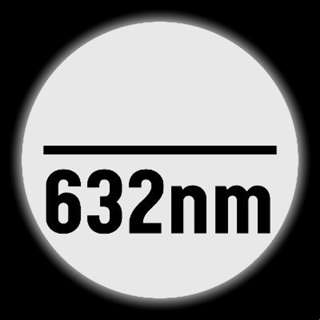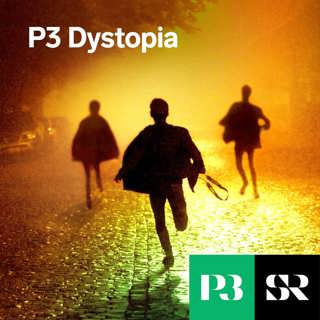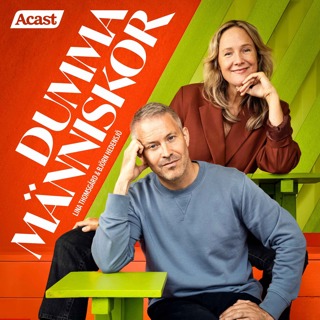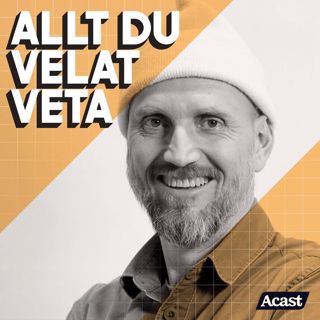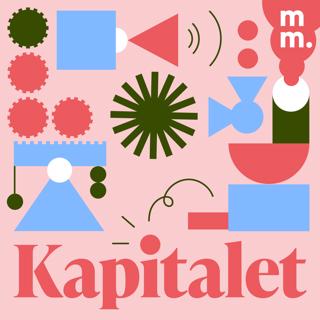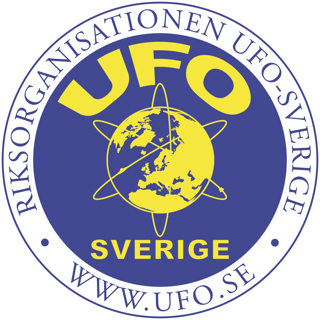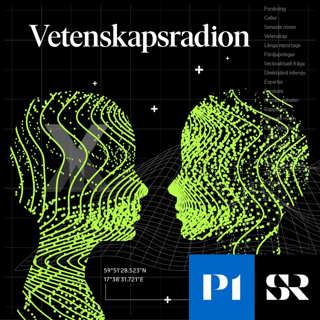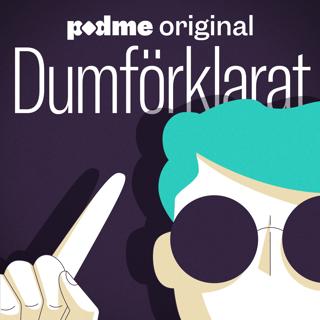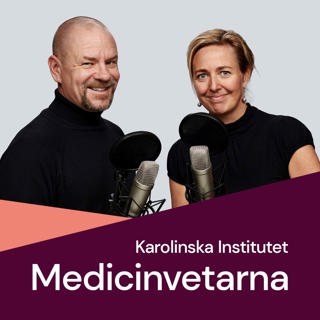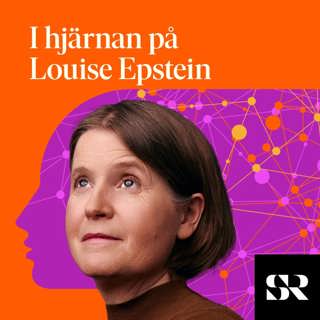
How to Build Fault-Tolerant Quantum Computers | Austin Fowler on Surface Codes + TQEC
Would we get a quantum computer sooner if everything was open source?In this episode, we speak with Austin Fowler, one of the architects of quantum error correction and a pioneer of the surface code used in today’s leading quantum computers. Fowler helped lay the groundwork for scalable, fault-tolerant computation at Google Quantum AI, before leaving to advocate for a more open and collaborative model of research.He explains why building a useful quantum computer will require millions of reliable qubits, why no known algorithm yet clearly outperforms classical computation, and why the field’s current competitive funding model may be slowing progress instead of accelerating it. From the engineering challenges of superconducting qubits to the economics of global research, Fowler offers a candid, inside look at the state of quantum technology.We explore the history and promise of quantum error correction, the software bottlenecks that still stand in the way, and how an open-source, international approach — modeled on CERN or the International Space Station — could transform the field. Along the way, Fowler reflects on his time at Google, the importance of collaboration, and what it will really take to make quantum computing practical.Whether you’re interested in quantum hardware, physics, computer science, or research policy, this conversation reveals the technical, ethical, and economic realities behind one of today’s most ambitious scientific pursuits.Follow us for more technical interviews with the world’s greatest scientists:Twitter: https://x.com/632nmPodcastInstagram: https://www.instagram.com/632nmpodcast?utm_source=ig_web_button_share_sheet&igsh=ZDNlZDc0MzIxNw==LinkedIn: https://www.linkedin.com/company/632nm/about/Substack: https://632nmpodcast.substack.com/Follow our hosts!Michael Dubrovsky: https://x.com/MikeDubrovskyMisha Shalaginov: https://x.com/MYShalaginovXinghui Yin: https://x.com/XinghuiYinSubscribe:Apple Podcasts: https://podcasts.apple.com/us/podcast/632nm/id1751170269Spotify: https://open.spotify.com/show/4aVH9vT5qp5UUUvQ6Uf6ORWebsite: [https://www.632nm.com](https://www.632nm.com/)Timestamps:00:00 - Intro01:40 - Austin’s Longevity in Quantum02:31 - What’s the Goal of Quantum Computing?05:01 - Creating Fault-Tolerant Qubits06:55 - Advantages of 2D Surface Code08:47 - Austin’s Journey into Quantum16:32 - Working at Google20:14 - Alternatives to Surface Codes22:18 - Should Quantum Computing Be Open Source?25:20 - Quantum Computing is Eating Itself30:52 - Open Source as a Mission35:46 - Advice for People Getting into TQEC39:03 - Bit Flips vs Phase Flips45:43 - History of Surface Codes49:05 - From Surface Code to Fault Tolerance57:19 - What Software do Quantum Computers Need?1:00:17 - Quantum vs Classical Error Correction1:05:57 - Manufacturing Superconducting Qubits1:12:02 - Noise Models in Software1:21:21 - How do NISQ Experiments help us Build Better Computers?1:24:01 - State of the Art Topological QEC1:31:38 - How did the TQEC Community Begin?1:34:46 - Future of TQEC1:36:03 - Quantum AI1:37:58 - Advice for Young Scientists1:41:35 - Underrated Quantum Research1:47:21 - What are the Most Important Upcoming Developments?
9 Dec 1h 50min

Why Syncing Atomic Clocks is Virtually Impossible | Judah Levine on UTC
Why is syncing atomic clocks still one of the hardest problems in physics and engineering?In this episode, we speak with Judah Levine—legendary NIST physicist and one of the key architects of modern timekeeping—about the invisible systems that hold the digital world together. Levine explains why synchronizing atomic clocks across the planet is far more complex than the clocks themselves, and why seemingly simple ideas like “round-trip delay” break down in real-world media such as fiber optics and the internet.We explore how UTC is built from hundreds of atomic clocks, the difference between keeping time and *transferring* time, and the surprising challenges introduced by asymmetric delays, chromatic dispersion, and environmental noise. Levine walks us through the evolution of cesium clocks, the rise of optical clocks, and the technologies that make GPS, finance, power grids, and global communication possible.Along the way, we discuss the history of time synchronization, from railroad schedules to radio frequencies to modern satellite systems; the ongoing debate over leap seconds; and why the future of precision timing depends not just on better clocks, but on better *engineering* to deliver those clocks’ performance to the real world.Whether you’re curious about atomic clocks, relativity, fiber optics, GPS, the structure of time itself, or the hidden physics behind everyday technology, this conversation offers a rare look at how science, engineering, and careful statistical thinking keep modern civilization in sync—down to the nanosecond.Follow us for more technical interviews with the world’s greatest scientists:Twitter: https://x.com/632nmPodcastInstagram: https://www.instagram.com/632nmpodcast?utm_source=ig_web_button_share_sheet&igsh=ZDNlZDc0MzIxNw==LinkedIn: https://www.linkedin.com/company/632nm/about/Substack: https://632nmpodcast.substack.com/Follow our hosts!Michael Dubrovsky: https://x.com/MikeDubrovskyMisha Shalaginov: https://x.com/MYShalaginovXinghui Yin: https://x.com/XinghuiYinSubscribe:Apple Podcasts: https://podcasts.apple.com/us/podcast/632nm/id1751170269Spotify: https://open.spotify.com/show/4aVH9vT5qp5UUUvQ6Uf6ORWebsite: [https://www.632nm.com](https://www.632nm.com/)Timestamps:00:00 – Intro01:03 – What is UTC?05:50 – Timekeeping for Satellites07:08 – How Radio Created Better Clocks18:32 – From Astronomy to Atoms25:25 – Why are there 24 Hours in a Day?29:55 – Why Synchronizing Clocks is so Hard47:09 – How did Judah get into Clocks?53:29 – Is UTC Vulnerable to Hackers?1:06:41 – Cesium vs Optical Atomic Clocks1:11:23 – How Cesium Clocks Work1:23:35 – Why Cesium Clocks are Imperfect1:26:17 – Judah’s 3 Year Experiment1:29:30 – Statistics with Clocks1:33:40 – Is Time Real?1:36:29 – Is the Universe Slowing Down?1:40:29 – Atomic Time and General Relativity1:42:17 – What’s Left for Atomic Clocks?1:54:34 – What would Judah do with Unlimited Funding?1:58:57 – Judah's Past in Programming2:02:55 – Advice for Young Scientists
26 Nov 2h 4min

Can We Predict History Like the Weather? | Peter Turchin on Cliodynamics
Why do civilizations rise, prosper, and then collapse? Here's what the math tells us.In this episode, we sit down with Peter Turchin, complexity scientist and founder of the field of cliodynamics, which uses data and mathematical models to study the long-term cycles of history. Turchin explains his theory of elite overproduction, how societies generate too many ambitious, educated elites competing for too few positions, and why this dynamic reliably leads to polarization, inequality, and political turmoil.We explore how his structural-demographic theory maps the recurring “boom and bust” rhythms that have shaped civilizations from ancient Rome to modern America, the role of military competition in driving cooperation and social complexity, and how new tools—from AI-assisted historical databases to ancient DNA and LiDAR—are transforming the study of the past.Whether you’re drawn to history, sociology, complexity science, or the fate of modern democracies, this conversation reveals how Turchin’s quantitative approach offers a new way to understand—and maybe even forecast—the forces that make societies rise and fall.Follow us for more technical interviews with the world’s greatest scientists:Twitter: https://x.com/632nmPodcastInstagram: https://www.instagram.com/632nmpodcast?utm_source=ig_web_button_share_sheet&igsh=ZDNlZDc0MzIxNw==LinkedIn: https://www.linkedin.com/company/632nm/about/Substack: https://632nmpodcast.substack.com/Follow our hosts!Michael Dubrovsky: https://x.com/MikeDubrovskyMisha Shalaginov: https://x.com/MYShalaginovXinghui Yin: https://x.com/XinghuiYinSubscribe:Apple Podcasts: https://podcasts.apple.com/us/podcast/632nm/id1751170269Spotify: https://open.spotify.com/show/4aVH9vT5qp5UUUvQ6Uf6ORWebsite: https://www.632nm.comTimestamps:00:00 - Intro01:48 - Overproduction of Elites10:56 - Did Models Predict the Rise of Trump?20:43 - Is Russian History Repeating in the US?26:48 - How Competition Stabilizes Societies32:14 - What Data Goes into Cliodynamic Models?38:13 - How New Technologies Shaped Archaeology43:28 - Can Historians Build Mathematical Intuitions?47:59 - What Questions can be Answered with Cliodynamics?52:23 - Does the NYC Mayoral Race Fit into Turchin's Theory?56:37 - Is Fear of China Bringing Us Together?58:29 - Do Historians Reject Turchin’s Work?1:00:03 - Trends in Civilizations and Outliers1:03:29 - Calvary and the Evolution of Societies1:10:03 - Is Evolution via Natural Selection a Suitable Analog for History?1:15:16 - Could Turchin's Ideas Be Misinterpreted Dangerously?
4 Nov 1h 18min

Why Do Quantum Computers Make So Many Mistakes? | Mikhail Lukin on Quantum Error Correction
You can’t copy a qubit. So how do quantum computers remember anything?In this episode, we sit down with Mikhail Lukin, Harvard physicist and co-director of the Harvard Quantum Initiative, whose lab is building quantum computers from arrays of individually trapped atoms. Lukin explains the paradox of quantum error correction—how you can safeguard quantum information even though it can’t be copied or measured directly—and why this breakthrough may be the key to making large-scale quantum computers possible.We dive into the strange logic of superposition, entanglement, and “small cat states,” explore what makes quantum evolution inherently analog, and learn how Lukin’s team uses optical tweezers and Rydberg interactions to engineer stable, reconfigurable qubits—atoms literally held and moved by light.Whether you’re fascinated by quantum mechanics, computing, Schrödinger’s cat, or the future of information, this conversation reveals how physicists are turning the weirdness of quantum physics into working technology—and why building a fault-tolerant quantum computer is one of the hardest and most exciting challenges in science today.Follow us for more technical interviews with the world’s greatest scientists:Twitter: https://x.com/632nmPodcastInstagram: https://www.instagram.com/632nmpodcast?utm_source=ig_web_button_share_sheet&igsh=ZDNlZDc0MzIxNw==LinkedIn: https://www.linkedin.com/company/632nm/about/Substack: https://632nmpodcast.substack.com/Follow our hosts!Michael Dubrovsky: https://x.com/MikeDubrovskyMisha Shalaginov: https://x.com/MYShalaginovXinghui Yin: https://x.com/XinghuiYinSubscribe:Apple Podcasts: https://podcasts.apple.com/us/podcast/632nm/id1751170269Spotify: https://open.spotify.com/show/4aVH9vT5qp5UUUvQ6Uf6ORWebsite: https://www.632nm.comTimestamps:00:00 - Intro01:32 - Fundamentals of Quantum Computers04:09 - Transistors vs Quantum Gates10:07 - What is Quantum Error Correction?14:23 - State of the Art QEC22:19 - Quantum Research Before Lukin27:35 - Lukin’s Breakout Work31:10 - From Quantum Optics to Quantum Computing36:59 - Working with Neutral Atoms48:17 - Funding Quantum Computers50:00 - Transverse Gate Operations58:22 - Is Quantum Computing All Hype?#quantumcomputing #quantumerrorcorrection #mikhaillukin #qubits #schrodingerscat #entanglement #superposition #quantumphysics
21 Okt 1h

We Interviewed the Winners of the Ig Nobel Prize | Ig Nobel 2025
The scientific stories behind this year's research that made people LAUGH, then THINK.Watch the 2025 Ig Nobel Ceremony here: https://youtu.be/z1cP4xKd_L4In this episode, we bring together three of this year’s Ig Nobel winners whose research spans psychology, food science and human biology. You’ll hear how a team of psychologists devised a counter-intuitive way to boost a narcissist’s self-confidence; how two physicists uncovered the “mozzarella phase” of pecorino cheese while perfecting cacio e pepe; and how a group studying lactation discovered that garlic changes breast-milk’s aroma and baby behavior.We explore the playful setups, surprising results and serious science behind each project, and how curiosity, humor and a dash of persistence turned ordinary questions into prize-winning research.Follow us for more technical interviews with the world’s greatest scientists:Twitter: https://x.com/632nmPodcastInstagram: https://www.instagram.com/632nmpodcast?utm_source=ig_web_button_share_sheet&igsh=ZDNlZDc0MzIxNw==LinkedIn: https://www.linkedin.com/company/632nm/about/Substack: https://632nmpodcast.substack.com/Follow our hosts!Michael Dubrovsky: https://x.com/MikeDubrovskyMisha Shalaginov: https://x.com/MYShalaginovXinghui Yin: https://x.com/XinghuiYinSubscribe:Apple Podcasts: https://podcasts.apple.com/us/podcast/632nm/id1751170269Spotify: https://open.spotify.com/show/4aVH9vT5qp5UUUvQ6Uf6ORWebsite: https://www.632nm.comTimestamps:00:00 - Intro01:19 - Physics Prize: Cacio e Pepe Sauce30:40 - Pediatrics Prize: Garlic Breast Milk44:48 - Psychology Prize: How to Boost Narcissism#ignobel2025 #cacioepepe #pastasauce #thermodynamics #psychology #dairy #pecorino
9 Okt 1h 5min

What Science can Learn from Startups | Adam Marblestone on Focused Research Organizations
Science has stalled. And Adam Marblestone thinks he knows why.Check out the Research Gap Map here: https://www.gap-map.org/?sort=rankIn this episode, we sit down with Adam Marblestone, neuroscientist, nanotechnologist, and founder of Convergent Research, to explore how new “Focused Research Organizations” (FROs) could reignite scientific progress. From DNA “ticker-tape” neural recording to optical connectomics and Neuralink, Marblestone explains how emerging neurotechnologies reveal both the brilliance and the bottlenecks of today’s research system.We discuss why traditional funding often fails to support ambitious, interdisciplinary projects, how FROs borrow the focus and speed of startups to build scientific infrastructure, and why projects like OpenAI, E11 Bio, and ultrasound-on-a-chip exemplify this new model. Marblestone breaks down his “Gap Map” of unsolved scientific challenges - from room-temperature superconductors to artificial ribosomes - and does the math on how tens of billions of dollars could close them.Whether you’re fascinated by neuroscience, scientific innovation, or the future of research itself, this conversation offers a rare insider’s look at how new institutions could rebuild the engine of discovery—and why the next wave of breakthroughs might depend more on organization than on ideas.Follow us for more technical interviews with the world’s greatest scientists:Twitter: https://x.com/632nmPodcastInstagram: https://www.instagram.com/632nmpodcast?utm_source=ig_web_button_share_sheet&igsh=ZDNlZDc0MzIxNw==LinkedIn: https://www.linkedin.com/company/632nm/about/Substack: https://632nmpodcast.substack.com/Follow our hosts!Michael Dubrovsky: https://x.com/MikeDubrovskyMisha Shalaginov: https://x.com/MYShalaginovXinghui Yin: https://x.com/XinghuiYinSubscribe:Apple Podcasts: https://podcasts.apple.com/us/podcast/632nm/id1751170269Spotify: https://open.spotify.com/show/4aVH9vT5qp5UUUvQ6Uf6ORWebsite: https://www.632nm.comTimestamps:00:00 - Intro01:25 - Working with George Church13:03 - Neuralink22:23 - Gap Maps31:47 - Artificial Ribosome36:45 - What is Convergent Research?40:03 - What are FROs?44:16 - What Made OpenAI So Successful?48:19 - Has AI Actually Impacted Science?52:15 - Notable FROs1:05:43 - Why Haven't There Been More Scientific Breakthroughs?1:09:47 - Lithography and Chip Design1:13:41 - We Can't Beat Insects1:16:45 - What Separates Good FROs1:18:40 - East vs West Coast Innovation1:27:21 - Research into Longevity1:33:27 - Advice for Grad Students1:39:40 - How to Get Involved in FROs#neuroscience #molecularbiology #quantumphysics #researchfunding #startups
7 Okt 1h 41min

What Optical Atomic Clocks Tell Us About Space-Time | Jun Ye
Times have changed. And cesium clocks can't keep up.In this episode, we sit down with Jun Ye, Joint Institute for Laboratory Astrophysics (JILA) Fellow and pioneer of optical lattice clocks, whose work has pushed timekeeping far beyond traditional cesium atomic clocks. Ye explains how combining ultra-stable lasers, frequency combs, and ultra-cold atoms produces clocks more than 100× more precise than today’s standards: so sensitive they can detect gravitational time dilation across the width of a human hair.We explore how this next generation of atomic clocks may open windows onto gravitational waves, test Einstein’s relativity in new regimes, and even help build a GPS for space travel. Ye also shares his personal journey from growing up during China’s Cultural Revolution to becoming a leader in precision measurement, and what that experience taught him about resilience, mentorship, and protecting scientific inquiry.Whether you’re curious about time, relativity, quantum physics, GPS technology, or the frontiers of precision measurement, this conversation offers a rare insider’s look at how breakthroughs in timekeeping can lead to entirely new physics.Follow us for more technical interviews with the world’s greatest scientists:Twitter: https://x.com/632nmPodcastInstagram: https://www.instagram.com/632nmpodcast?utm_source=ig_web_button_share_sheet&igsh=ZDNlZDc0MzIxNw==LinkedIn: https://www.linkedin.com/company/632nm/about/Substack: https://632nmpodcast.substack.com/Follow our hosts!Michael Dubrovsky: https://x.com/MikeDubrovskyMisha Shalaginov: https://x.com/MYShalaginovXinghui Yin: https://x.com/XinghuiYinSubscribe:Apple Podcasts: https://podcasts.apple.com/us/podcast/632nm/id1751170269Spotify: https://open.spotify.com/show/4aVH9vT5qp5UUUvQ6Uf6ORWebsite: https://www.632nm.comTimestamps:00:00 - Intro01:17 - Why Haven't Optical Clocks Replaced Cesium Clocks?10:45 - Fundamentals of Optical Atomic Clocks17:34 - History of Atomic Clocks30:18 - What is JILA?35:01 - What brought Jun to JILA?39:33 - What does it take to get a PhD in Physics?42:40 - Jun Ye's PhD work44:36 - Limitations of Laser Stabilization50:38 - How Do We Make the Most Stable Lasers?57:28 - How to Measure Laser Coherence Times1:04:24 - Building Atomic Clocks from First Principles1:08:59 - Jun's Notable Accomplishments1:14:00 - Magic Frequencies for Optical Traps1:21:04 - Can AI Improve Atomic Clocks?1:24:00 - How Does Quantum Entanglement Affect Clocks?1:30:29 - Development of Quantum Computers1:34:23 - Pros and Cons of Nuclear Clocks1:43:49 - What Would Jun Do With Unlimited Research Funding?1:47:09 - Lessons from China's Cultural Revolution#quantumcomputing #quantumphysics #atomicclock #laser #physics #optics #astrophysics #astronomy #spacetime
23 Sep 1h 52min

Laser Cooling and Quantum Timekeeping | Bill Phillips
How did cooling atoms with lasers revolutionize our understanding of time?In this episode, we speak with Bill Phillips, Nobel Laureate in Physics, about his groundbreaking work on laser cooling and trapping of atoms: research that not only won him the Nobel Prize but also transformed modern timekeeping and technology. Phillips explains why breaking the Doppler cooling limit changed physics forever and what it means that today’s clocks can measure time differences caused by moving a device just a few millimeters in Earth’s gravity.We discuss the history of timekeeping from sundials to atomic clocks, how Einstein’s relativity reshaped our view of time, and the serendipitous discovery of sub-Doppler cooling that opened the door to ultra-precise measurement, quantum computing, and fundamental tests of nature. Along the way, Phillips reflects on the culture of physics, the importance of mentorship, and the joy of discovery.Whether you’re curious about time, relativity, quantum physics, GPS technology, or the frontiers of precision measurement, this conversation offers rare insight into how science, collaboration, and curiosity converge to shape the modern world.Follow us for more technical interviews with the world’s greatest scientists:Twitter: https://x.com/632nmPodcastInstagram: https://www.instagram.com/632nmpodcast?utm_source=ig_web_button_share_sheet&igsh=ZDNlZDc0MzIxNw==LinkedIn: https://www.linkedin.com/company/632nm/about/Substack: https://632nmpodcast.substack.com/Follow our hosts!Michael Dubrovsky: https://x.com/MikeDubrovskyMisha Shalaginov: https://x.com/MYShalaginovXinghui Yin: https://x.com/XinghuiYinSubscribe:Apple Podcasts: https://podcasts.apple.com/us/podcast/632nm/id1751170269Spotify: https://open.spotify.com/show/4aVH9vT5qp5UUUvQ6Uf6ORWebsite: [https://www.632nm.com](https://www.632nm.com/)Timestamps:00:00 - Intro01:43 - What is Time?05:49 - How Did Bill Get Into Atom Cooling?18:30 - How Do Atomic Clocks Actually Work?31:08 - History of Atomic Clocks37:18 - Laser Cooling for Atomic Clocks40:49 - How To Synchronize Atomic Clocks43:20 - How Cesium Cooling Was Developed45:48 - Pushing Beyond the Doppler Limit49:47 - The Beginning of Thor Labs52:45 - The Previous Limits were Wrong1:05:37 - How Bill Broke the Doppler Limit1:12:22 - What is Optical Pumping?1:20:27 - Can Atom Trapping Be Leveraged For Cold Fusion?1:31:32 - What Makes Bill So Lucky?1:35:25 - How Bill's Work Led to Atomic Clocks1:41:05 - What Makes Cesium So Good For Atomic Clocks?1:47:38 - Quantum Effects on Atomic Clocks1:59:02 - Bose-Einstein Condensates2:09:05 - Did Bill's Work Lead To Quantum Computing?2:11:26 - Bill's Thoughts on the Future#billphillips #nobelprize #laser #atomicclock #dopplereffect #quantumcomputing #quantumphysics #gps #physics #boseeinsteincondensate #theoreticalphysics #relativity
9 Sep 2h 24min
